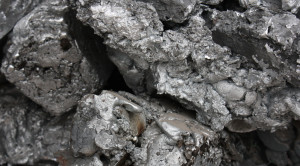 The global zinc market is forecasted to grow substantially between 2014 and 2018, stimulated by the constant galvanization demands of huge steel structures requiring a zinc coating, particularly in the industrialized nations. Owing to the steady growth of the segment, industry experts have estimated that the sector would expand at a rate of 5.4% per annum in the next few years. The majority of the market share (about 74%) is dominated by non-alloyed unwrought zinc, while other forms of zinc account for the remaining market share. Zinc bars and rods, wire account for 1.8%, zinc sheets, plates and foil for 3.3%, zinc flaks and powders for 1.3%, zinc fittings, tubes and pipes for 1.6% of the market share and so on.
The global zinc market is forecasted to grow substantially between 2014 and 2018, stimulated by the constant galvanization demands of huge steel structures requiring a zinc coating, particularly in the industrialized nations. Owing to the steady growth of the segment, industry experts have estimated that the sector would expand at a rate of 5.4% per annum in the next few years. The majority of the market share (about 74%) is dominated by non-alloyed unwrought zinc, while other forms of zinc account for the remaining market share. Zinc bars and rods, wire account for 1.8%, zinc sheets, plates and foil for 3.3%, zinc flaks and powders for 1.3%, zinc fittings, tubes and pipes for 1.6% of the market share and so on.
According to the zinc market analysis, the segment would be driven by its numerous product and mechanical applications, mainly due to the malleability of this metal. This particular characteristic of zinc makes it immensely useful, especially in the manufacturing of dry cell batteries used to power wrist-watches, calculators and a series of military as well as aeronautical applications. The increasing demand for this metal is also due to that fact that it can be used to produce bronze and brass which are utilized in gutters, downpipes and roofing as various zinc sheet applications. Moreover, the fact that the metal does not alter its properties even after recycling, adds to its growing demand.
There has been a rising demand for zinc in several parts of the world including United States, China, India, South Korea and Germany. Encouraged by growing levels of urbanization, China has been governing this market, accounting for 46% of the world’s market share in 2013. However, it has been speculated that nations like Poland, Turkey, Romania, Slovakia and Portugal would also witness strong growth in the following years and become significant names in the global zinc markets.
Despite the prospective growth of the market, the segment is also expected to face certain challenges. As the commodity costs are low, exploration expenditure of zinc are expected to decline by 2020. Another reason for this is the drop in new discoveries alongside government regulations which restrict zinc from entering farms which aim to improve the air quality.



